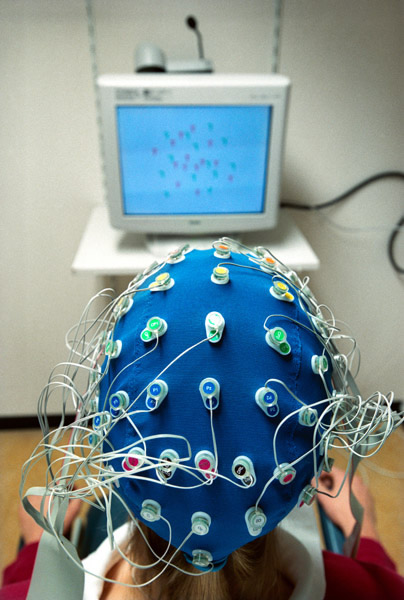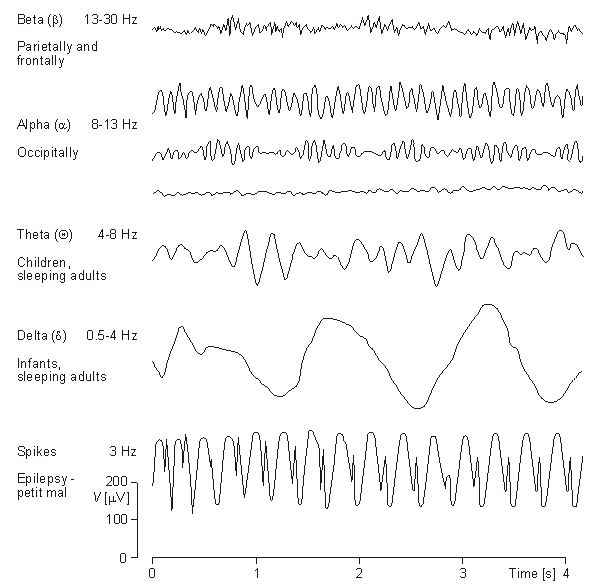Electroencephalogram (EEG) is a brain-imaging method that records the brain’s electrical activity at the surface of the scalp. EEG usually comes in the form of a cap or headset that have several sensors which are designed to fix to the surface of the head.
Neurons communicate by passing electrical signals along connecting fibers, and this neural activity can be picked up on the surface of the head by the EEG sensors. The entire system is usually hooked up to a software program (although there are now wireless designs available) which through calculated algorithms, detects brain measurements in regards to emotion, memory and attention.
The first time EEG was ever used was in 1929 by Hans Berger, who recorded brain activity from the closed skull and reported changes during different states. In 1957, Gray Walter was the first person to record the brain with electrodes and showed that brain rhythms changed according to different demanded mental tasks.
EEG equipment is mainly used for research, as well as in a recently developed form of treatment called neurofeedback. Neurofeedback displays EEG information in real-time and has been used to help treat people with ADHD and epilepsy, by helping the client become consciously aware of the activity in their brain while using audio and visual displays. EEG can also be used to diagnose or monitor seizures, as well as to evaluate brain activity after brain injuries.
In the field of Neuromarketing, EEG is used to evaluate whether a subject is engaged or not, or has positive or negative emotional engagement. Frequency and amplitude are characteristics of the recorded EEG patterns. The frequency can range from 1-80 Hz (divided in alpha bands, beta bands, and more) and amplitudes are measured from 10-100 microvolts. Alpha waves are associated with an alert, but relaxed mental state and are most visible over the parietal and occipital lobes. Beta activity is related to an active state of mind, prominently in the frontal cortex and in other areas during concentrated mental activities. In neuroscience terms, the EEG equipment is normally used to measure the activity in the left – right asymmetry of the frontal EEG for neuromarketing purposes. This is usually measured by the power in the alpha band (8-13 Hz). Research has suggested that greater activity in the left frontal region is usually associated with positive emotional states.
Although EEG is less insightful than Functional Magnetic Resonance Imaging (fMRI), it still provides Marketers and Researchers with insight into the electrical activity of the cortex, which is extremely useful in understanding human emotion and engagement levels.
The image below shows examples of recorded brainwaves over different bandwidths.
 (Source)
(Source)
 (Source)
(Source)